
Hurricane Ian in Florida: A Mitigation Success Story for Building Codes
Following Hurricane Ian, FEMA's Mitigation Assessment Team was deployed to Florida to observe and assess damage from flood and wind as well as damage to critical facilities.
Hurricane Ian, a high Category 4 hurricane packing maximum sustained winds of 150 miles per hour, made landfall on Sept. 28, 2022, near Fort Myers, Fla., bringing catastrophic storm surge, widespread flooding and damaging winds.
More than 150 people lost their lives during Hurricane Ian, with economic damage exceeding $112 billion.
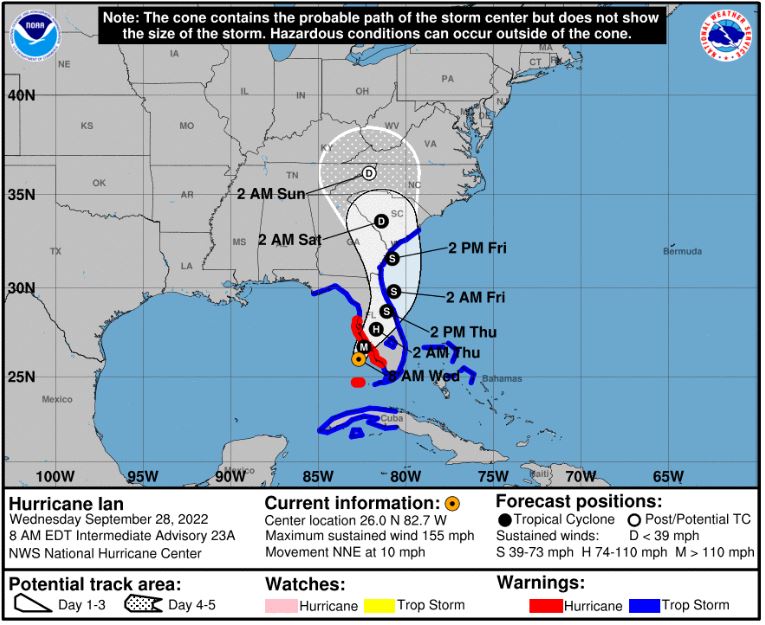
Immediately following Hurricane Ian, the Federal Emergency Management Agency (FEMA) sent experts from its Building Science Disaster Support Program to Florida to assess the performance of buildings, structures and community lifelines.
The International Code Council, through its strategic partnership with FEMA, deployed staff as part of the agency’s Mitigation Assessment Team (MAT). The MAT worked closely with federal, state and local partners including building and fire code officials, academia and private sector partners to conduct performance assessments of buildings and related infrastructure to determine the causes of damage and examine the results of successful mitigation activities.

FEMA Releases Report to Help Improve Building Safety and Community Resilience
The Hurricane Ian MAT was deployed to Florida from Jan. 15-25, 2023, to observe and assess damage from flood and wind as well as damage to critical facilities. The MAT comprised 34 field personnel including 15 contract subject matter experts (SMEs), nine FEMA personnel, eight from the Florida Division of Emergency Management and two partner organization SMEs.
Members of the MAT developed conclusions and recommendations to improve building safety and community resilience. The findings were recently published in FEMA’s MAT Report, Hurricane Ian in Florida: Building Performance Observations, Recommendations, and Technical Guidance.
The MAT’s building performance observations from Hurricane Ian were used to develop over 80 recommendations for actions that can be implemented by:
- Building and fire code officials
- Emergency managers
- Federal, state, local, tribal and territorial governments
- Designers, developers, contractors and the construction industry
- Researchers
- Planners
- Building owners and operators
- Key building safety stakeholders
These recommendations can help reduce injuries, mitigate damage to various building types and their associated utility systems, and improve building and community resilience from future natural hazard events.
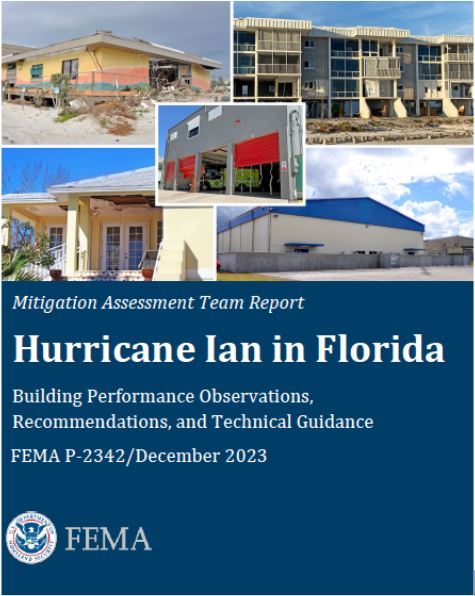
25 Years of a Statewide Building Code in Florida
Hurricane Ian made landfall just on the heels of the 30th anniversary of Hurricane Andrew, which devastated South Florida in 1992 and served as a significant catalyst for statewide changes to building safety in Florida.
While Florida had enacted a state minimum building code law in 1974, Hurricane Andrew revealed several gaps and issues with Florida’s approach to building code adoption, administration and enforcement. As a result, the Florida Building Code Study Commission was appointed by Governor Lawton Chiles to review the system of Florida’s local codes created by the 1974 law and make recommendations for modernization.
In 1998, the Florida Legislature adopted a series of reforms from the Florida Building Code Study Commission including a streamlined, uniform family of codes and the strengthening of code administration and enforcement through education, training and rigorous discipline.
The first edition of the Florida Building Code (FBC), based on the first editions of the Code Council’s International Codes® (I-Codes), went into effect on March 1, 2002. The FBC superseded all local building codes in Florida thereby creating a single, statewide building code.
When Hurricane Ian made landfall, the 7th Edition (2020) of the FBC, published December 31, 2020, was in effect. The 7th Edition of the FBC is based on the 2018 editions of the I-Codes, with Florida-specific amendments.
Building Code Success Stories from the Hurricane Ian Mitigation Assessment Team Report
Flood Elevation Matters
Code Council staff who were deployed with the Hurricane Ian MAT Flood Team visited several neighborhoods to observe flood damage in single-family homes. These observations presented several opportunities for the Flood Team to evaluate the effectiveness of elevating houses to mitigate flood damage.
The MAT found that building elevation was generally a universal indicator of performance. Many older buildings built prior to the adoption of the FBC and participation in FEMA’s National Flood Insurance Program (NFIP) were inundated with two to eight feet of water, while newer, elevated residential homes performed substantially better.
For example, a neighborhood in Lee County, Fla. offered a side-by-side example of homes built to different building code and elevation requirements. The neighborhood was sited in an AE flood zone. AE flood zones are areas that present a one percent annual chance of flooding and a 26 percent chance over the life of a 30-year mortgage, according to FEMA. At this site, the 1990 and 2006 houses had less than two feet of flooding. The 1990 house had floodwater in the lowest floor, and the 2006 house had floodwater in its enclosure below the lowest floor. In contrast, the 1973 house had approximately seven feet of flooding on the lowest floor.
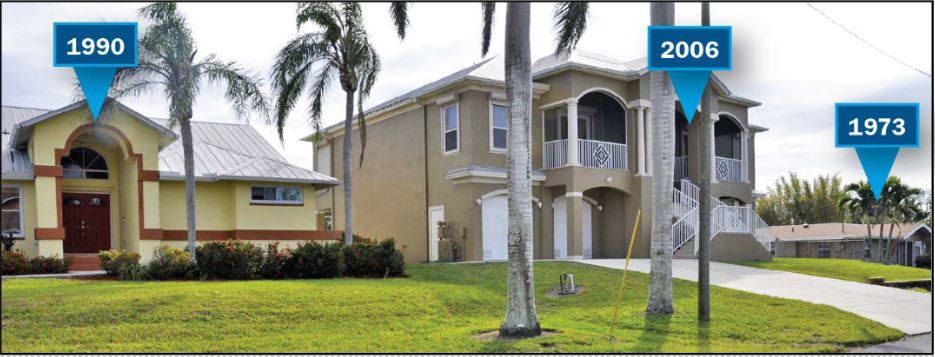
Using National Flood Insurance Program (NFIP) Policy Claims to Better Understand Building Performance
To reinforce observations from the field, the MAT collected Hurricane Ian NFIP policy claims data along with Florida county parcel data for flood damage to single-family residential buildings. The MAT analyzed Hurricane Ian NFIP claims across representative areas including average claim total, building, and contents claims by decade built.
SEE RELATED: Recent Study Examines the Influence of Building Codes on Mortgage Delinquency After Hurricanes
The MAT’s analysis indicates progressive reductions in both numbers of submitted claims and average dollar totals of claims for buildings and contents by decade which highlights strengths and advancement in codes, materials and methods by which homes were built.
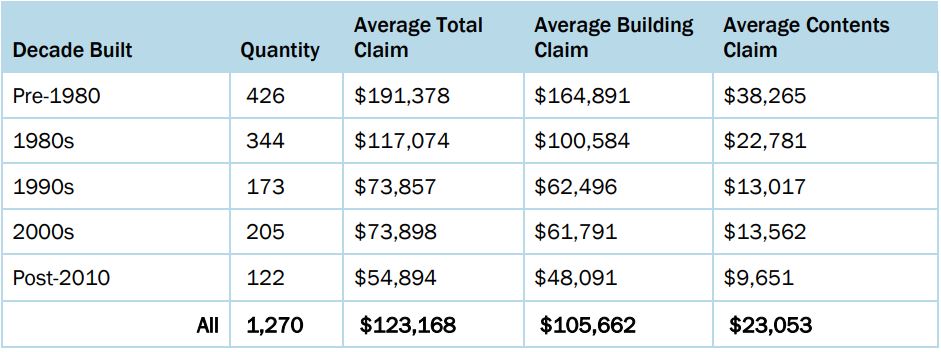
Similarly, the MAT examined elevated versus non-elevated residential buildings as part of its Hurricane Ian NFIP claims analysis. The MAT found that the elevated versus non-elevated building attribute was the strongest indicator of building performance within the NFIP claims data. This is consistent with the MAT’s field observations and expectations based on the limitations of standard NFIP policy building and content coverage for areas below the lowest floor of an elevated building.
Standing as a testament to the effectiveness of modern building codes, two-thirds (67 percent) of all Hurricane Ian NFIP residential building and contents claims came from non-elevated buildings; whereas elevated single-family residences only accounted for one-third (33 percent) of NFIP claims.

Further, the MAT found that age of construction is also an indicator of building performance. The average post-2010 building claim ($48,091) is more than a third less than the average pre-1980 building claim ($164,891) and more than 50 percent less than the overall average building claim ($105,662). On average, the damage to newer buildings is consistently lower.
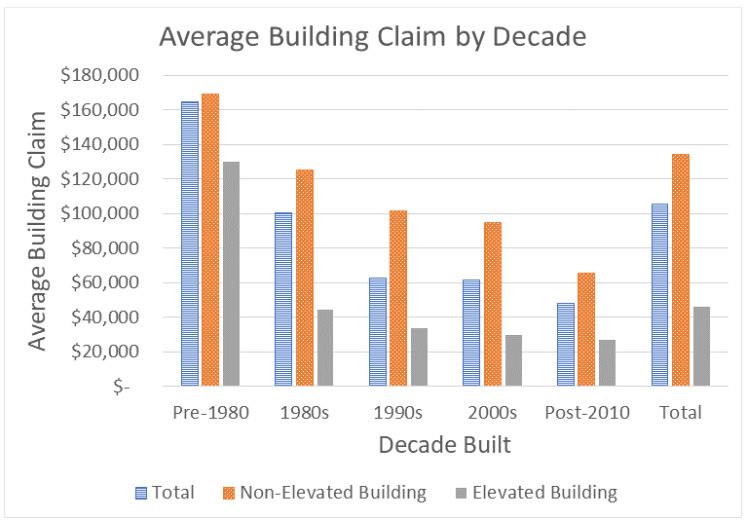
Regarding Hurricane Ian flooding, the MAT concluded that building performance, elevation, and foundation type matter. Newer construction is also a likely indicator of improved building performance.
Room for Improvement: Performance of Dry Floodproofing in Commercial Buildings
The Hurricane Ian MAT visited several areas to evaluate the effectiveness of flood-resistant design and construction practices. Building elevation was again a universal and effective indicator of performance. However, the MAT observed numerous cases where buildings designed and equipped with dry floodproofing systems (e.g. flood shields) were never employed by the owner/operator which resulted in flood damage and adverse impacts to businesses in the buildings.
The MAT visited over a dozen buildings throughout Naples and Collier County that were designed to be dry floodproofed including office buildings, restaurants, retail/storefronts, a post office, bank, coffee shop, and other non-residential buildings in areas that experienced flooding during Hurricane Ian. Although the MAT hoped to document lessons learned related to the performance of dry floodproofing measures, the most common observations from field assessments were that the dry floodproofing measures were often not deployed as designed.
This resulted in extensive flood inundation damage as well as weeks or months of business disruption while repairs were completed. Numerous businesses were still not in operation during the time of the MAT assessments, fully 4 months after landfall, and many were still weeks or months away from reopening because of repairs. Some of these businesses went out of business permanently, which could have been the result of not implementing available floodproofing measures in preparation for Hurricane Ian and sustaining significant flood damage.
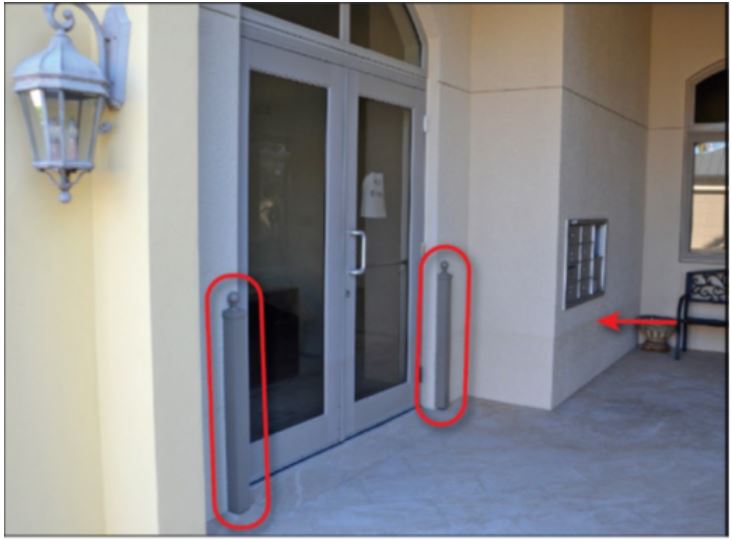
No Wind-Related Structural Damage to Homes Built Post-Florida Building Code
Perhaps the single most significant life safety observation from the Hurricane Ian MAT report is the wind resilience of homes built after the adoption of the 2001 FBC. Notably, the MAT did not observe wind-related structural damage to any post-FBC homes. However, the MAT did observe some houses built before the 2001 FBC (pre-FBC) that experienced considerable structural damage.
For example, the first photo shows a home in St. James City built in 2022, just before the storm, with no visible damage. The home sustained estimated wind speeds of 113 mph and was built to a design wind speed of 161 mph.
Conversely, the next photo shows a pre-FBC two-family home built in 1990, also in St. James City located just one-half mile from the 2022 home which sustained severe structural damage from the storm.

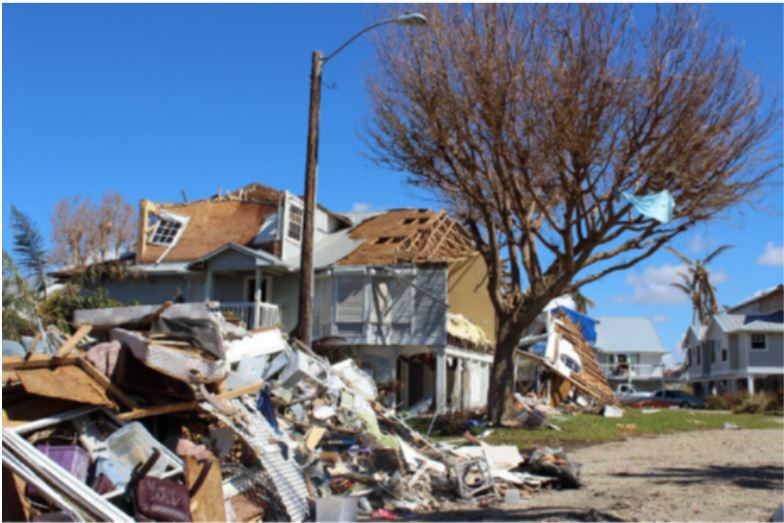
While registering a major positive finding related to life safety, the MAT did still observe widespread roof covering damage to asphalt shingles and metal panels throughout the areas and sites visited. The most prevalent type of damage observed after Hurricane Ian, was damage to hips and ridges, which was observed on both newer and older roofs, although there were several examples where the damage was limited to the exterior roofing materials thereby limiting significant rainwater intrusion into the home.
The MAT found that newer roof coverings generally performed better than older roof coverings, noting recent improvements to material and installation requirements in recent FBC code development cycles. The MAT also acknowledged innovative improvements made by building material manufacturers, some of which may not be fully recognized or realized when measured by current testing methods.
Mitigation Assessment Team Recommendations
All totaled, MAT observations drove the development of 53 separate conclusions and accompanying recommendations including three standalone Recovery Advisories that offer insights for building improvement opportunities for homeowners and building owners alike.
Download a copy of the Hurricane Ian MAT Report here.






